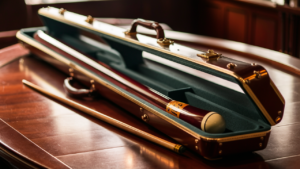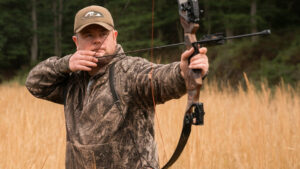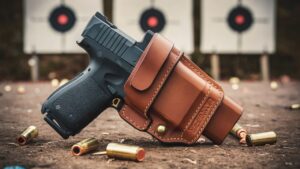Adjusting the draw weight and length on a compound bow is essential. It impacts accuracy and comfort for every archer.
Recommended Best Compound Bow 2025
| Recommendation | Product |
| Best Overall | Sanlida Dragon 10 Flagship Hunting Compound Bow Kit |
| Popular Choice | Bear Archery Adult Compound Bow |
| Best Value | The Hunting Compound Bow Package |
| Best Budget | BALLISTA BAT Reverse Draw Compound Mini Crossbow |
| Another Excellent Pick | The Hunting Public Adapt 2+ |
Understanding how to make these adjustments can enhance your shooting experience. Compound bows are popular for their precision and power. But, proper setup is crucial. Adjusting the draw weight involves changing the tension of the bowstring. This affects how much force you need to pull the string back.
Adjusting draw length ensures the bow fits your arm span. A perfect fit leads to better shots and less strain. Both adjustments can improve your performance and enjoyment. In this guide, you will learn the steps to fine-tune your bow. Whether you’re a beginner or an experienced archer, this knowledge is valuable. Ready to enhance your archery skills? Let’s dive in.

Importance Of Draw Weight
The Importance of Draw Weight on a compound bow can’t be overstated. It’s the measure of force needed to draw the bowstring back. This impacts not only your shooting experience but also your effectiveness in hitting the target. Choosing the right draw weight is crucial for optimal performance and safety. Imagine pulling back a bow with ease and precision, hitting your mark effortlessly. That’s the goal.
Impact On Performance
Draw weight directly influences your arrow speed and trajectory. A higher draw weight can propel your arrows faster, giving them a flatter trajectory and greater penetration power. This can be advantageous for hunting or competitive shooting where precision is key. However, higher draw weight requires more strength. You might hit your target better with a manageable weight rather than struggling with a heavier one.
Think about your comfort during practice sessions. With a suitable draw weight, you can shoot longer without fatigue. It’s about finding a balance that suits your strength and skill level. Like the time you adjusted your bow and suddenly, your aim improved. That’s the kind of performance impact draw weight can have.
Safety Considerations
Safety is paramount when adjusting draw weight. Too high a draw weight can lead to strain or injury, especially if you’re pushing beyond your physical limits. Ensure your equipment is in good condition and properly calibrated for your chosen weight. Misjudging this can result in accidents or equipment damage.
Consider your shooting environment. If you’re practicing in a confined space, a lower draw weight might be safer. It reduces the chance of causing damage or injury. Your safety gear also plays a role. Make sure you’re equipped with arm guards and finger protection. Remember, it’s not just about hitting the target; it’s about doing so safely.
How do you find your perfect draw weight? Experiment with different settings. Listen to your body and assess your comfort level. That’s where your optimal draw weight lies.
Understanding Draw Length
Adjusting draw weight and length on compound bows is crucial for accuracy and comfort. Proper settings enhance shooting performance. Ensure the bow fits well to improve your archery experience.
Understanding draw length is crucial for archers using compound bows. It impacts accuracy and comfort. Correct draw length ensures a smooth shooting experience. Many archers overlook its importance. This section explores what draw length means and common mistakes made.
Defining Draw Length
Draw length is the distance from the bowstring to the grip. It measures how far you pull back the string. Proper draw length matches your arm span. It ensures full extension and relaxed shooting. Incorrect draw length affects aim and consistency. Finding your draw length involves simple math. Measure your arm span and divide by 2.5. This gives you a starting point. Adjust as needed for comfort.
Common Mistakes
Many archers misjudge their draw length. A common mistake is choosing a draw length too long. This can strain muscles and disrupt form. It might lead to inaccurate shots. Conversely, too short a draw length limits power. It affects arrow speed and precision. Beginners often ignore professional advice. Consulting an expert helps in avoiding errors. Regular practice and adjustments improve performance.
Choosing The Right Equipment
Choosing the right equipment for your compound bow is crucial. It ensures a comfortable and successful archery experience. A well-adjusted bow enhances accuracy and confidence. Proper gear means better control and performance. Let’s explore the vital aspects of choosing the right equipment.
Types Of Bows
Various bow types suit different needs. Recurve bows are traditional and simple. They are great for beginners. Longbows offer a classic feel. They are elegant and straightforward. Compound bows feature cams and pulleys. They provide power and precision. Each type caters to specific preferences and skills.
Selecting Arrows
Arrows are vital for effective shooting. Choose the right material. Carbon arrows are lightweight and durable. Aluminum arrows are heavier but sturdy. Match arrow weight with bow draw weight. This ensures optimal performance. Consider arrow length and spine. These factors affect flight stability. Proper selection enhances accuracy and enjoyment.
Measuring Draw Length
Adjusting draw weight and length on compound bows ensures comfort and accuracy. Proper alignment with your arm length makes shooting easier and more precise. These adjustments enhance performance and reduce strain during practice.
Measuring draw length is a crucial step in setting up your compound bow for optimal performance and comfort. It’s essential to get this measurement right, as it directly impacts your accuracy and overall experience. If you’re unsure how to measure draw length or want to ensure you’re doing it correctly, this guide is for you.
You might be wondering, why is draw length so important? Simply put, an incorrect draw length can lead to poor posture, reduced accuracy, and even physical discomfort. By accurately measuring draw length, you ensure that your bow fits you perfectly, enhancing your shooting experience and improving your precision.
###
Tools Required
To get started, you’ll need a few basic tools. Most of these are easy to find, and you might already have them at home:
– Tape Measure: A flexible one is best for measuring your arm span.
– Pencil and Paper: To jot down measurements.
– Assistant: Having someone to help makes the process smoother.
– Mirror: Optional, but it can help you check your posture.
###
Step-by-step Guide
1. Stand Upright: Position yourself against a wall with your arms stretched out horizontally. Keep your back straight and feet shoulder-width apart.
2. Measure Wingspan: Using the tape measure, ask your assistant to measure the distance from the tip of one middle finger to the tip of the other. Ensure the tape measure is taut for an accurate reading.
3. Calculate Draw Length: Divide your wingspan measurement by 2.5. This formula provides a good starting point for determining your draw length.
4. Check Posture: Stand in front of a mirror to ensure your posture is correct. Adjust if necessary to avoid slouching or overextending your arms.
Why not try adjusting your draw length and see how it affects your accuracy? Maybe you’ll discover a new level of comfort that enhances your shooting performance.
Remember, precise measurements can make a significant difference in your overall archery experience. So, why settle for a guess when you can measure and be sure?
Adjusting Draw Weight
Adjusting the draw weight on a compound bow is crucial for accuracy. The right draw weight ensures comfort and enhances performance. Beginners often struggle to find the perfect setting. This guide simplifies the process, making it accessible to everyone. Understanding draw weight helps in achieving consistent shots. It also prevents strain and injury during practice. Let’s delve into the factors and techniques for adjusting draw weight.
Factors To Consider
Several factors influence the ideal draw weight. Age and physical strength play a significant role. Younger archers usually need a lower draw weight. Experienced archers can manage higher weights with ease. The type of shooting also affects the draw weight choice. Target shooting and hunting require different settings. Weather conditions might impact the performance too. Cold weather can stiffen the bow, affecting draw weight. Consider these factors for a balanced setup.
Adjustment Techniques
Adjusting draw weight involves some simple techniques. Start by locating the limb bolts on your bow. These bolts control the tension of the limbs. Use an Allen wrench to turn the bolts. Clockwise rotation increases the draw weight. Counterclockwise rotation reduces it. Make small adjustments to avoid over-tightening. Check the manufacturer’s guidelines for safe limits. Always test the bow after each adjustment. Ensure the changes suit your shooting style.
Common Challenges
Properly adjusting draw weight and length on compound bows presents challenges. Many archers struggle with finding the right balance. Incorrect settings can lead to discomfort and reduced performance. Understanding the bow’s mechanics is crucial for achieving precision and comfort.
Adjusting the draw weight and length on a compound bow can be a tricky task, often fraught with challenges. Whether you’re a seasoned archer or a beginner, understanding these common hurdles can help you improve your shooting experience. Let’s dive into some of the difficulties you might face and how to effectively address them.
Overcoming Physical Limitations
Physical limitations can be a significant barrier when adjusting your bow. A friend of mine struggled with shoulder pain while trying to increase draw weight. It was a lesson in understanding one’s physical limits and the importance of gradual adjustments.
Are you finding it difficult to pull back your bow smoothly? Consider starting with a lower draw weight. Gradually increase it as your muscles strengthen. Consistent practice can help you build the stamina needed.
Remember, it’s not just about strength. Proper technique plays a huge role. Ensure your form is correct to avoid unnecessary strain. Watching tutorial videos or seeking advice from experienced archers can be incredibly beneficial.
Addressing Equipment Issues
Equipment issues can be another common challenge. A compound bow that isn’t properly tuned can greatly affect your accuracy. I once spent hours trying to figure out why my shots were inconsistent, only to find that the bowstring needed adjusting.
Is your bow making unusual noises or not performing as expected? It might be time to check the cams and strings. Regular maintenance can prevent most of these issues. Ensure everything is tightened and aligned correctly.
Investing in quality tools can make adjustments easier. A bow press and an Allen wrench set should be part of your gear. These tools can help you make precise adjustments without damaging your equipment.
Navigating these challenges can feel daunting, but with patience and the right approach, you can master the art of adjusting your compound bow. What strategies have you found effective in overcoming these hurdles?
Expert Tips For Beginners
Adjusting draw weight and length on compound bows is crucial. Beginners need expert advice to start off right. Proper adjustments enhance accuracy and comfort. This guide offers valuable tips for those new to archery.
Starting With Basics
First, understand your bow’s specifications. Check the manufacturer’s manual. It provides guidelines for adjustments. Know your draw length. Measure from the center of your chest to your fingers. Use this measurement to adjust the bow. Draw weight affects your shooting. Start with a manageable weight. Increase it gradually. This prevents strain and ensures control.
Progressing Safely
Safety is key in archery. Use a bow scale to measure draw weight. Adjust it to your comfort level. Test your adjustments. Practice shooting with your new settings. Make small changes over time. This helps your body adapt safely. Monitor your progress regularly. Keep track of your shooting performance. Adjust settings based on your comfort and accuracy.
Maintaining Your Setup
Once you’ve adjusted your compound bow, maintaining the setup is crucial. Proper maintenance ensures your bow’s accuracy and safety. Regular checks and professional servicing are key. They help in keeping your bow in perfect condition.
Regular Checks
Regular checks prevent unexpected problems. Start with examining the bowstring. Look for frays or signs of wear. A damaged string can affect your shooting accuracy. Check the cams for smooth rotation. Misalignment can lead to poor performance. Inspect the limbs for cracks or stress marks. Any damage needs immediate attention. Tighten all screws and bolts regularly. Loose parts can cause instability.
Professional Servicing
Consider professional servicing at least once a year. Experts can identify issues you might miss. They have the tools and knowledge for thorough inspections. Professionals can also adjust draw weight and length. They ensure your bow is perfectly tuned. This extends the lifespan of your equipment.
Frequently Asked Questions
How Do I Tell If My Draw Length Is Correct?
Ensure your draw length allows you to stand comfortably, with your arms extended, and the bowstring reaches your jaw. Check for consistent anchor points and smooth release. Adjust if you experience discomfort or inaccuracies. Consult with a professional for precise measurements.
Accurate draw length improves accuracy and comfort.
How Do You Adjust The Weight On A Compound Bow?
Adjust the weight on a compound bow by turning the limb bolts. Clockwise increases weight; counterclockwise decreases it. Ensure both bolts are adjusted equally to maintain balance. Use a bow scale to check the draw weight accurately. Always consult the bow manual for specific instructions.
Will Adjusting Draw Weight Affect Accuracy?
Adjusting draw weight can affect accuracy. Higher draw weight may increase arrow speed and stability. Lower draw weight might enhance control, reducing fatigue. Proper tuning is essential for consistent performance. Ensure your bow and arrows are adjusted to match your skills for optimal accuracy.
How Do You Know If Your Draw Weight Is Too High?
Struggling to draw the bow smoothly indicates excessive draw weight. Experiencing shoulder or arm fatigue quickly is another sign. Difficulty in maintaining correct form while aiming suggests the draw weight is too high. Ensure comfortable practice sessions to confirm suitable draw weight.
Conclusion
Adjusting draw weight and length enhances your bow shooting. It improves accuracy. Makes each shot more reliable. Helps with comfort during practice. It ensures you use your bow effectively. Experiment with settings to find your ideal fit. Regular checks prevent unnecessary strain.
Proper adjustments lead to better performance. Whether hunting or practicing, it’s crucial. A well-tuned bow boosts your confidence. Take time to adjust carefully. Enjoy every shooting experience more. Happy shooting!








